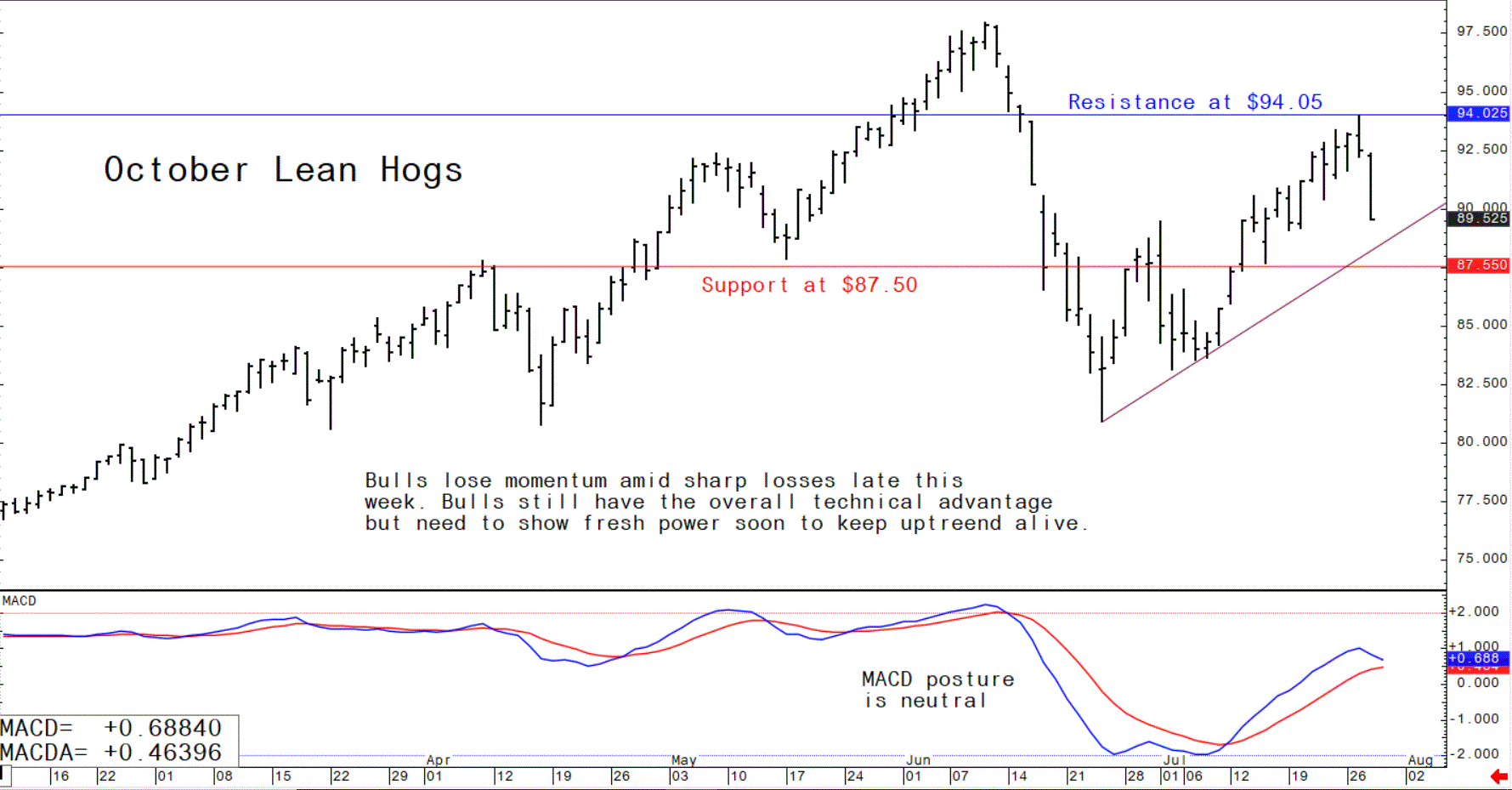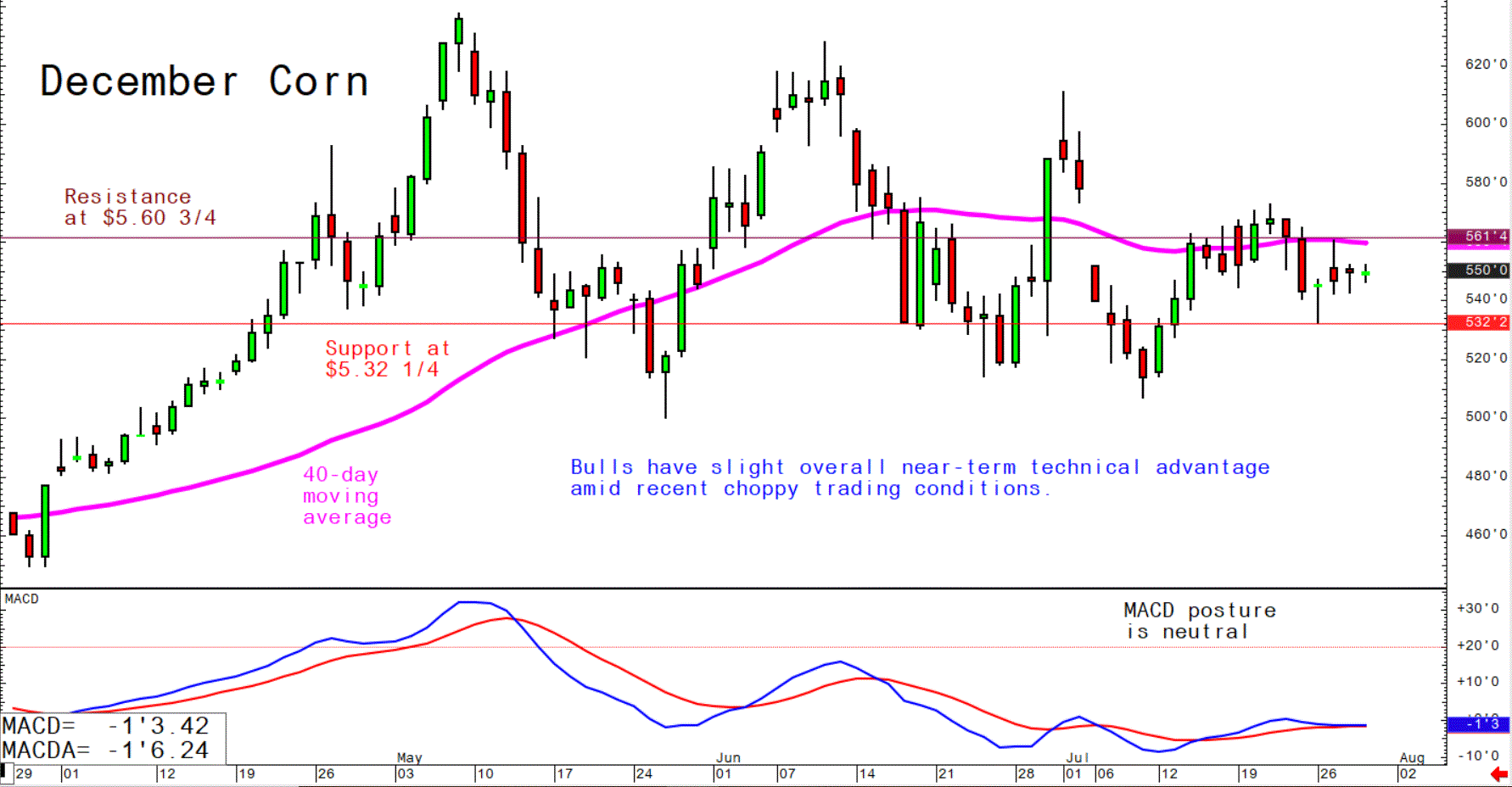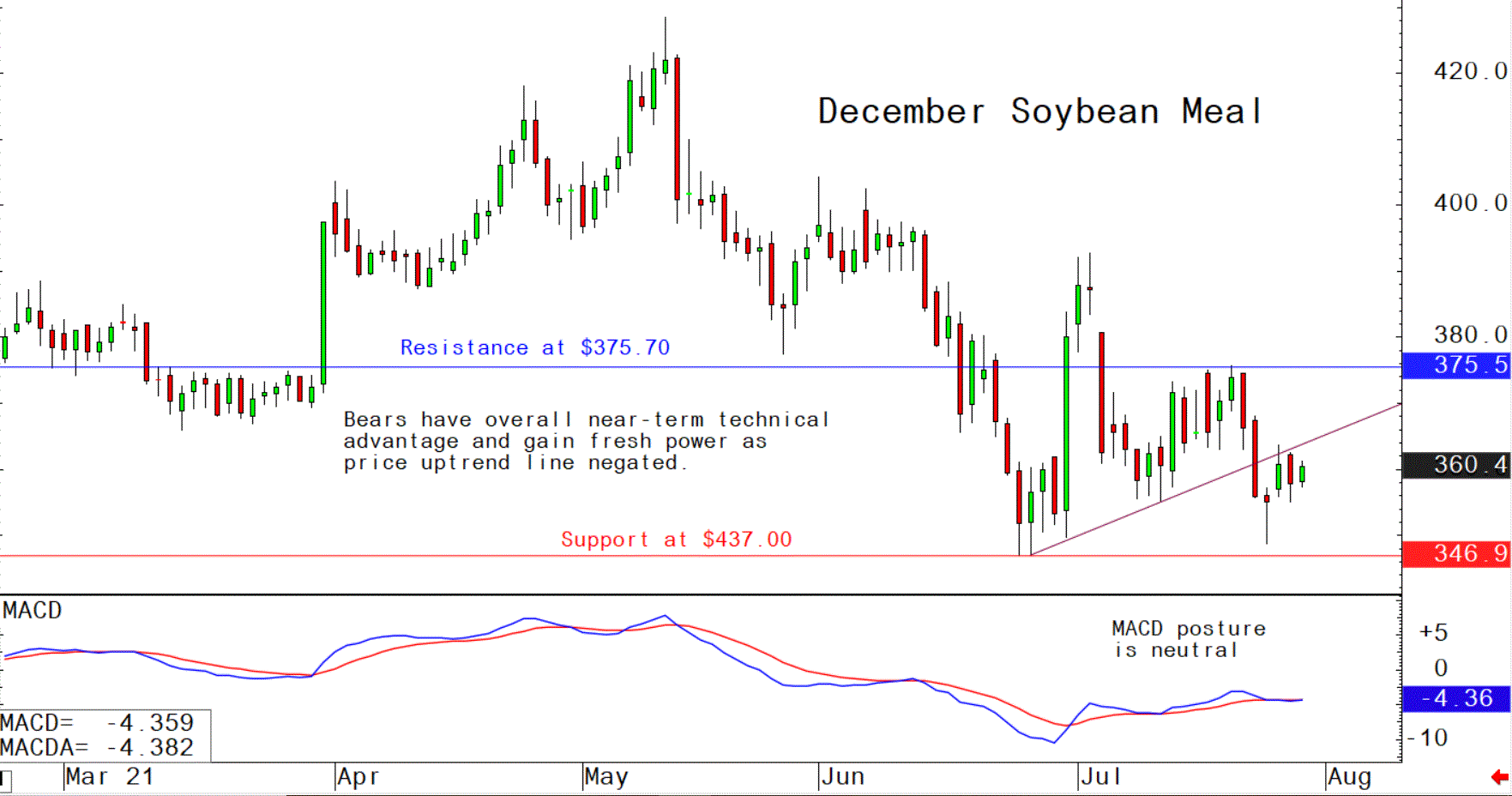



Pig Outlook: Lean hog bulls stumble and need to show fresh power soon
Lean hog futures late this week dropped sharply to jeopardize a near-term price uptrend in place on the daily bar chart. If there is more selling pressure to end the week, the price uptrend would be negated to suggest a near-term market top is in place.Hog futures strengthened to start the week thanks to gains in the pork product market, seasonally tight supplies, and futures’ discount to the cash hog market. There appeared to be no fundamental-driven news that triggered this week’s selloff, as wholesale pork prices extended recent gains amid stronger retail demand. Daily trading limits expanded to $4.50 Thursday after a limit-lower close for the October contract on Wednesday.
Latest USDA and other news regarding the global pork industry
USDA confirms ASF in Dominican Republic
USDA has confirmed African Swine Fever (ASF) in samples from pigs in the Dominican Republic via a cooperative surveillance program, USDA announced Wednesday. According to the Animal and Plant Health Inspection Service (APHIS), pork and pork products are already banned from entering the U.S. due to restrictions linked to classical swine fever, and the Department of Homeland Security’s Customs and Border Protection (CBP) is “increasing inspections of flights from the Dominican Republic to ensure travelers do not bring prohibited products” into the U.S. APHIS also said that CBP will also be “ensuring that garbage from these airplanes are properly disposed of to prevent the transmission of ASF.” USDA said it has offered more testing support and will consult with the country on any additional steps of actions to “support response and mitigation measures.” USDA has offered similar help to Haiti, which shares a border with the Dominican Republic.
China still working to stabilize hog prices
China’s cabinet on Wednesday said it would step-up emergency adjustments of its pork reserves and take steps to stabilize hog prices, according to state media reports cited by Reuters. A surge in marketing of heavy hogs late-winter and into spring caused Chinese hog and pork prices to tank, raising concerns about producer margins and their ability to remain in business. The country is still working to rebuild its hog herd after ASF and to control the virus. Recent flooding in key producing areas has added to concerns about producers’ ability to stay in business as well as the spread of disease.
USDA: US pork exports remain robust
USDA Thursday morning reported US pork net sales of 38,500 MT for 2021 were up 57 percent from the previous week and 43 percent from the prior 4-week average. Increases were primarily for Mexico (25,100 MT, including decreases of 800 MT), Chile (3,300 MT, including decreases of 100 MT), Japan (3,200 MT, including decreases of 200 MT), Honduras (2,300 MT), and Colombia (2,000 MT, including decreases of 100 MT). Total net sales for 2022 of 400 MT were for Chile. Exports of 29,900 MT were down 3 percent from the previous week, but up 1 percent from the prior 4-week average. The destinations were primarily to Mexico (12,300 MT), China (5,700 MT), Japan (4,000 MT), South Korea (2,100 MT), and Canada (1,700 MT).
USDA secretary predicts moderation in food inflation
USDA Secretary Tom Vilsack predicted the jump in US food prices in June will quickly moderate despite rising concern about inflationary risks in the economy. “There are certain selective items in the grocery store folks may see for a period of time increased costs,” Vilsack said last Friday in an interview on Bloomberg Television’s Balance of Power with David Westin. “We think this will even out as we begin to recover, as we begin to get the supply and demand in better balance.”
US food prices jumped 0.8% in June from May, double the pace of the prior two months. Meat and poultry prices surged 2.5% last month, according to the US Department of Labor’s consumer price index. Still, food costs are up just 2.4% from a year earlier, while overall inflation was 5.4% for the period.
Vilsack also said USDA would soon announce proposed regulations to provide more protection to livestock producers in their dealings with the highly consolidated meatpacking industry. President Joe Biden’s executive order on competition instructed the USDA to consider stronger regulations. “I think we will see significant action on that in the very near term,” Vilsack told Bloomberg Television.
The next week’s likely high-low price trading ranges:
October lean hog futures--$87.50 to $94.05 and with a sideways bias
December soybean meal futures--$350.00 to $375.70, and with a sideways-lower bias
December corn futures--$5.32 1/4 to $7.73 and a sideways bias
Latest analytical daily charts lean hog, soybean meal and corn futures










